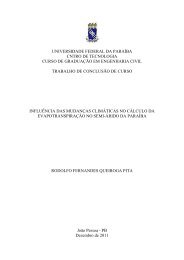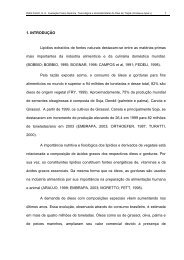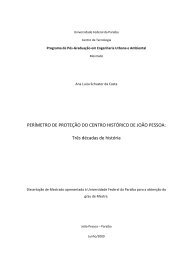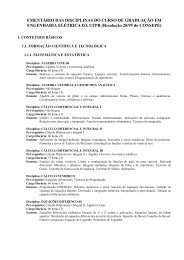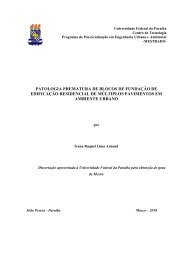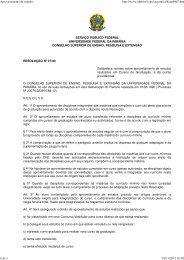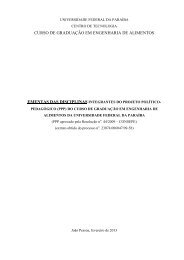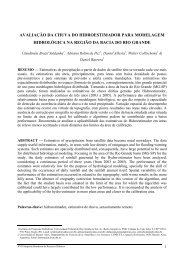editorial team
editorial team
editorial team
You also want an ePaper? Increase the reach of your titles
YUMPU automatically turns print PDFs into web optimized ePapers that Google loves.
Akpinar and Akpinar<br />
11<br />
Table 1. Geographic location of weather stations in the east Anatolia region of Turkey<br />
Location Longitude east Latitude north<br />
Agri 43º 03’ 39º 44’<br />
Bingöl 40º 29’ 38º 53’<br />
Bitlis 42º 06’ 38º 22’<br />
Elazig 39º 14’ 38º 41’<br />
Erzincan 39º 29’ 39º 44’<br />
Erzurum 41º 17’ 39º 55’<br />
Hakkari 43º 45’ 37º 34’<br />
Igdir 44º 02’ 39º 55’<br />
Kars 43º 05’ 40º 36’<br />
Malatya 38º 19’ 38º 21’<br />
Muş 41º 30’ 38º 44’<br />
Tunceli 39º 33’ 39º 07’<br />
Van 43º 20’ 38º 28’<br />
Modeling of climatic parameters<br />
Statistical techniques of regression models are<br />
frequently used to study a set of experimental data.<br />
Adequacy and validity of the model is performed to<br />
determine if the model will function in a successful<br />
manner in its intended operating field.<br />
Linear regression analysis is a statistical tool by<br />
which a line is fitted through a set of experimental data<br />
using the least-squares method. Regression is used in a<br />
wide variety of applications in order to analyze how a<br />
single dependent variable is affected by the values of<br />
one or more independent variables. In this study,<br />
temperature, maximum temperature, minimum<br />
temperature, relative humidity, wind speed, pressure,<br />
rainfall, solar radiation and sunshine duration collected<br />
for a period of 10 years (1994–2003) is modeled using<br />
linear regression analysis with 95% confidence level.<br />
The correlation coefficient (R) was primary criterion<br />
for selecting the best equation to describe the curve<br />
equation. In addition to R, the reduced χ 2 as the mean<br />
square of the deviations between the observed and<br />
calculated values for the models and root mean square<br />
error analysis (RMSE) were used to determine the<br />
goodness of the fit. The higher the values of the R, and<br />
lowest values of the χ 2 and RMSE, the better the<br />
goodness of the fit (Akpinar and Akpinar, 2004;<br />
Akpinar et al., 2006). These can be calculated as:<br />
R<br />
n<br />
n<br />
2<br />
∑( Yexp,i<br />
−Yexpmean<br />
) −∑( Ypre,<br />
i −Yexp,i<br />
)<br />
i=<br />
1<br />
i=<br />
1<br />
2<br />
∑( Yexp,i<br />
−Yexpmean<br />
)<br />
2<br />
=<br />
n<br />
χ<br />
2<br />
=<br />
n<br />
∑<br />
i=1<br />
i=<br />
1<br />
( Yexp<br />
,i<br />
− Ypre,i<br />
)<br />
N − n<br />
2<br />
( Y pre<br />
− Y )<br />
1/ 2<br />
2<br />
(1)<br />
(2)<br />
N<br />
⎡ 1<br />
2 ⎤<br />
RMSE = ⎢ ∑ , i exp, i ⎥<br />
(3)<br />
⎣ N i=<br />
1<br />
⎦<br />
where, Y exp,i is the ith experimentally observed value,<br />
Y expmean, is the mean of experimentally observed value,<br />
Y pre,i the ith predicted value, N the number of<br />
observations and n is the number constants.<br />
Validation of the established model was made by<br />
comparing the computed climatic data with the<br />
observed climatic data in any particular run under<br />
certain conditions. The performance of the models for<br />
the climatic data was illustrated. The experimental data<br />
are generally banded around the straight line<br />
representing data found by computation, which<br />
indicates the suitability of the model in describing the<br />
computed climatic data.<br />
RESULTS<br />
The monthly daily summaries over the ten years 1994–<br />
2003 for the nine meteorological parameters were used<br />
in developing the models presented (Table 2). The<br />
summaries are calculated over all the meteorological<br />
stations where possible. Scatter diagrams of the monthly<br />
average daily measurements for each year are presented<br />
in Figs 2, 4, 6, 8, 10, 12, 14, 16, and 18. Polynomial and<br />
trigonometric models were fitted to the data with the<br />
months (m: 1–12) as the predictor variable. The<br />
performance of these models was investigated by<br />
comparing the determination of coefficient (R), reduced<br />
chi-square (χ 2 ) and root mean square error (RMSE)<br />
between the observed and predicted values. Over fitting<br />
was avoided by listing only the functions with<br />
statistically non-zero coefficients.<br />
The monthly average temperatures<br />
From Fig. 2, it can be seen that there is an evident<br />
difference at monthly average temperatures between the<br />
investigated cities. The overall average temperature for<br />
10 years was found to be about 13.19 o C for Elazig,<br />
11.50 o C for Erzincan, 5.18 o C for Erzurum, 5.58 o C for<br />
Kars, 6.83 o C for Agri, 12.74 o C for Igdir, 13.28 o C for<br />
Tunceli, 10.11 o C for Van, 14.14 o C for Malatya, 12.56 o C<br />
for Bingöl, 10.69 o C for Muş, 9.87 o C for Bitlis, 10.70 o C<br />
for Hakkari. While the Erzurum city is the coldest area<br />
Journal of Urban and Environmental Engineering (JUEE), v.4, n.1, p.9-22, 2010




